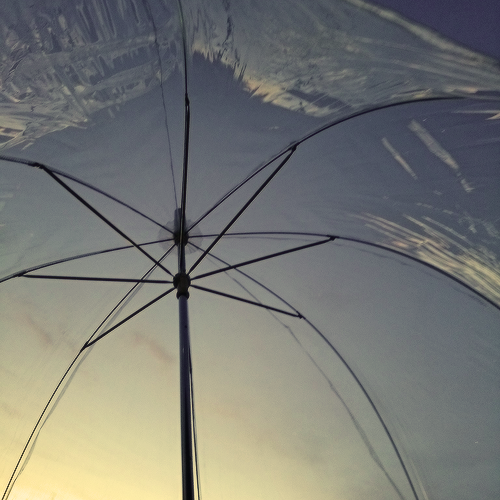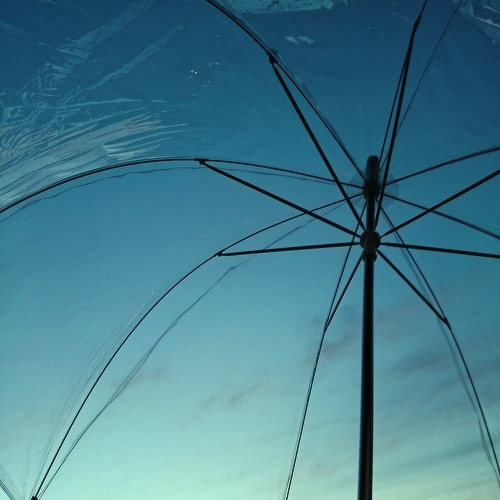Smparticle2 - Untitled






More Posts from Smparticle2 and Others






「Howls Moving Castle (2004) {+color palletes} 」insp.








Gone With The Wind
Major Research Instrumentation Program

Credit: Photo by Lance Long; courtesy Electronic Visualization Laboratory, University of Illinois at Chicago
The Major Research Instrumentation program has helped to fund pieces of research equipment ranging from scanning probe microscopes, which have helped to visualize and characterize nano-scale biological tools, to nuclear magnetic resonance (NMR) spectrometers, which allow chemists to identify the individual molecules they make. Not only does this instrumentation help scientists advance their own research, it’s also used to train the next generation of scientists. For example, an X-ray diffractometer at Utah State University allowed Joan Hevel and Sean Johnson to teach four high school students in their lab about protein crystallization. Learn more.
Finding Your Way Around in an Uncertain World
Suppose you woke up in your bedroom with the lights off and wanted to get out. While heading toward the door with your arms out, you would predict the distance to the door based on your memory of your bedroom and the steps you have already made. If you touch a wall or furniture, you would refine the prediction. This is an example of how important it is to supplement limited sensory input with your own actions to grasp the situation. How the brain comprehends such a complex cognitive function is an important topic of neuroscience.
Dealing with limited sensory input is also a ubiquitous issue in engineering. A car navigation system, for example, can predict the current position of the car based on the rotation of the wheels even when a GPS signal is missing or distorted in a tunnel or under skyscrapers. As soon as the clean GPS signal becomes available, the navigation system refines and updates its position estimate. Such iteration of prediction and update is described by a theory called “dynamic Bayesian inference.”
In a collaboration of the Neural Computation Unit and the Optical Neuroimaging Unit at the Okinawa Institute of Science and Technology Graduate University (OIST), Dr. Akihiro Funamizu, Prof. Bernd Kuhn, and Prof. Kenji Doya analyzed the brain activity of mice approaching a target under interrupted sensory inputs. This research is supported by the MEXT Kakenhi Project on “Prediction and Decision Making” and the results were published online in Nature Neuroscience on September 19th, 2016.
The team performed surgeries in which a small hole was made in the skulls of mice and a glass cover slip was implanted onto each of their brains over the parietal cortex. Additionally, a small metal headplate was attached in order to keep the head still under a microscope. The cover slip acted as a window through which researchers could record the activities of hundreds of neurons using a calcium-sensitive fluorescent protein that was specifically expressed in neurons in the cerebral cortex. Upon excitation of a neuron, calcium flows into the cell, which causes a change in fluorescence of the protein. The team used a method called two-photon microscopy to monitor the change in fluorescence from the neurons at different depths of the cortical circuit (Figure 1).

(Figure 1: Parietal Cortex. A depiction of the location of the parietal cortex in a mouse brain can be seen on the left. On the right, neurons in the parietal cortex are imaged using two-photon microscopy)
The research team built a virtual reality system in which a mouse can be made to believe it was walking around freely, but in reality, it was fixed under a microscope. This system included an air-floated Styrofoam ball on which the mouse can walk and a sound system that can emit sounds to simulate movement towards or past a sound source (Figure 2).

(Figure 2: Acoustic Virtual Reality System. Twelve speakers are placed around the mouse. The speakers generate sound based on the movement of the mouse running on the spherical treadmill (left). When the mouse reaches the virtual sound source it will get a droplet of sugar water as a reward)
An experimental trial starts with a sound source simulating a distance from 67 to 134 cm in front of and 25 cm to the left of the mouse. As the mouse steps forward and rotates the ball, the sound is adjusted to mimic the mouse approaching the source by increasing the volume and shifting in direction. When the mouse reaches just by the side of the sound source, drops of sugar water come out from a tube in front of the mouse as a reward for reaching the goal. After the mice learn that they will be rewarded at the goal position, they increase licking the tube as they come closer to the goal position, in expectation of the sugar water.
The team then tested what happens if the sound is removed for certain simulated distances in segments of about 20 cm. Even when the sound is not given, the mice increase licking as they came closer to the goal position in anticipation of the reward (Figure 3). This means that the mice predicted the goal distance based on their own movement, just like the dynamic Bayesian filter of a car navigation system predicts a car’s location by rotation of tires in a tunnel. Many neurons changed their activities depending on the distance to the target, and interestingly, many of them maintained their activities even when the sound was turned off. Additionally, when the team injects a drug that suppresses neural activities in a region of the mice’s brains, called the parietal cortex they find that the mice did not increase licking when the sound is omitted. This suggests that the parietal cortex plays a role in predicting the goal position.

(Figure 3: Estimation of the goal distance without sound. Mice are eager to find the virtual sound source to get the sugar water reward. When the mice get closer to the goal, they increase licking in expectation of the sugar water reward. They increased licking when the sound is on but also when the sound is omitted. This result suggests that mice estimate the goal distance by taking their own movement into account)
In order to further explore what the activity of these neurons represents, the team applied a probabilistic neural decoding method. Each neuron is observed for over 150 trials of the experiment and its probability of becoming active at different distances to the goal could be identified. This method allowed the team to estimate each mouse’s distance to the goal from the recorded activities of about 50 neurons at each moment. Remarkably, the neurons in the parietal cortex predict the change in the goal distance due to the mouse’s movement even in the segments where sound feedback was omitted (Figure 4). When the sound was given, the predicted distance from the sound became more accurate. These results show that the parietal cortex predicts the distance to the goal due to the mouse’s own movements even when sensory inputs are missing and updates the prediction when sensory inputs are available, in the same form as dynamic Bayesian inference.

(Figure 4: Distance estimation in the parietal cortex utilizes dynamic Bayesian inference. Probabilistic neural decoding allows for the estimation of the goal distance from neuronal activity imaged from the parietal cortex. Neurons could predict the goal distance even during sound omissions. The prediction became more accurate when sound was given. These results suggest that the parietal cortex predicts the goal distance from movement and updates the prediction with sensory inputs, in the same way as dynamic Bayesian inference)
The hypothesis that the neural circuit of the cerebral cortex realizes dynamic Bayesian inference has been proposed before, but this is the first experimental evidence showing that a region of the cerebral cortex realizes dynamic Bayesian inference using action information. In dynamic Bayesian inference, the brain predicts the present state of the world based on past sensory inputs and motor actions. “This may be the basic form of mental simulation,” Prof. Doya says. Mental simulation is the fundamental process for action planning, decision making, thought and language. Prof. Doya’s team has also shown that a neural circuit including the parietal cortex was activated when human subjects performed mental simulation in a functional MRI scanner. The research team aims to further analyze those data to obtain the whole picture of the mechanism of mental simulation.
Understanding the neural mechanism of mental simulation gives an answer to the fundamental question of “How are thoughts formed?” It should also contribute to our understanding of the causes of psychiatric disorders caused by flawed mental simulation, such as schizophrenia, depression, and autism. Moreover, by understanding the computational mechanisms of the brain, it may become possible to design robots and programs that think like the brain does. This research contributes to the overall understanding of how the brain allows us to function.

Researchers discover self-assembling 2D and 3D materials
Self-assembly of matter is one of the fundamental principles of nature, directing the growth of larger ordered and functional systems from smaller building blocks. Self-assembly can be observed in all length scales from molecules to galaxies. Now, researchers at the Nanoscience Centre of the University of Jyväskylä and the HYBER Centre of Excellence of Aalto University in Finland report a novel discovery of self-assembling two- and three-dimensional materials that are formed by tiny gold nanoclusters of just a couple of nanometres in size, each having 102 gold atoms and a surface layer of 44 thiol molecules. The study, conducted with funding from the Academy of Finland and the European Research Council, has been published in Angewandte Chemie.
The atomic structure of the 102-atom gold nanocluster was first resolved by the group of Roger D Kornberg at Stanford University in 2007. Since then, several further studies of its properties have been conducted in the Jyväskylä Nanoscience Centre, where it has also been used for electron microscopy imaging of virus structures. The thiol surface of the nanocluster has a large number of acidic groups that can form directed hydrogen bonds to neighbouring nanoclusters and initiate directed self-assembly.
Read more.




“Conceited, spoiled, and arrogant- all of those things, of course, are true to the character. But she had courage and determination, and that, I think, is why women must secretly admire her.” -Vivien Leigh
















I’m never gonna finish this meme
5 cartoons/anime; 1/5 Spirited Away


You are the center of wonderland & Keep the last glow in mind by Jana Luo
-
 the-letter-horror-lover liked this · 3 weeks ago
the-letter-horror-lover liked this · 3 weeks ago -
 starclansaidso liked this · 1 month ago
starclansaidso liked this · 1 month ago -
 blueplasmastar reblogged this · 1 month ago
blueplasmastar reblogged this · 1 month ago -
 hes-a-rat-whisperer liked this · 1 month ago
hes-a-rat-whisperer liked this · 1 month ago -
 ghostluz reblogged this · 1 month ago
ghostluz reblogged this · 1 month ago -
 nanahhm liked this · 1 month ago
nanahhm liked this · 1 month ago -
 rubes-rubes liked this · 3 months ago
rubes-rubes liked this · 3 months ago -
 daengeli liked this · 3 months ago
daengeli liked this · 3 months ago -
 parvanehananrnar reblogged this · 4 months ago
parvanehananrnar reblogged this · 4 months ago -
 parvanehananrnar liked this · 4 months ago
parvanehananrnar liked this · 4 months ago -
 mafaldapires reblogged this · 5 months ago
mafaldapires reblogged this · 5 months ago -
 perdida-em-jupiter reblogged this · 5 months ago
perdida-em-jupiter reblogged this · 5 months ago -
 ai-meems liked this · 5 months ago
ai-meems liked this · 5 months ago -
 n3v3r3v3rrr reblogged this · 5 months ago
n3v3r3v3rrr reblogged this · 5 months ago -
 mintbecrazy liked this · 5 months ago
mintbecrazy liked this · 5 months ago -
 escrevo-para-nao-morrer liked this · 6 months ago
escrevo-para-nao-morrer liked this · 6 months ago -
 iammoremylrds reblogged this · 6 months ago
iammoremylrds reblogged this · 6 months ago -
 n3v3r3v3rrr reblogged this · 6 months ago
n3v3r3v3rrr reblogged this · 6 months ago -
 my-one-thing reblogged this · 6 months ago
my-one-thing reblogged this · 6 months ago -
 florescendointensidade reblogged this · 6 months ago
florescendointensidade reblogged this · 6 months ago -
 florescendointensidade liked this · 6 months ago
florescendointensidade liked this · 6 months ago -
 replantar-se liked this · 6 months ago
replantar-se liked this · 6 months ago -
 own-chaos reblogged this · 6 months ago
own-chaos reblogged this · 6 months ago -
 arretada reblogged this · 6 months ago
arretada reblogged this · 6 months ago -
 arianoperdido reblogged this · 6 months ago
arianoperdido reblogged this · 6 months ago -
 arianoperdido liked this · 6 months ago
arianoperdido liked this · 6 months ago -
 mhs-m reblogged this · 6 months ago
mhs-m reblogged this · 6 months ago -
 descrevos reblogged this · 6 months ago
descrevos reblogged this · 6 months ago -
 inquietismo reblogged this · 6 months ago
inquietismo reblogged this · 6 months ago -
 rainy-lilies liked this · 7 months ago
rainy-lilies liked this · 7 months ago -
 uhhfuckit liked this · 7 months ago
uhhfuckit liked this · 7 months ago -
 michitakao liked this · 7 months ago
michitakao liked this · 7 months ago -
 flower3ss liked this · 7 months ago
flower3ss liked this · 7 months ago -
 perdida-em-jupiter liked this · 7 months ago
perdida-em-jupiter liked this · 7 months ago -
 sweetl-y liked this · 7 months ago
sweetl-y liked this · 7 months ago -
 inquietismo liked this · 7 months ago
inquietismo liked this · 7 months ago -
 returning-tonowhere reblogged this · 7 months ago
returning-tonowhere reblogged this · 7 months ago -
 returning-tonowhere liked this · 7 months ago
returning-tonowhere liked this · 7 months ago -
 descrevos reblogged this · 7 months ago
descrevos reblogged this · 7 months ago -
 littlebatss liked this · 7 months ago
littlebatss liked this · 7 months ago -
 look--up--the--stars reblogged this · 7 months ago
look--up--the--stars reblogged this · 7 months ago -
 look--up--the--stars liked this · 7 months ago
look--up--the--stars liked this · 7 months ago -
 m-e-m-o-r-i-a-e reblogged this · 7 months ago
m-e-m-o-r-i-a-e reblogged this · 7 months ago -
 cocokashi-co reblogged this · 7 months ago
cocokashi-co reblogged this · 7 months ago -
 zelem-melek liked this · 7 months ago
zelem-melek liked this · 7 months ago